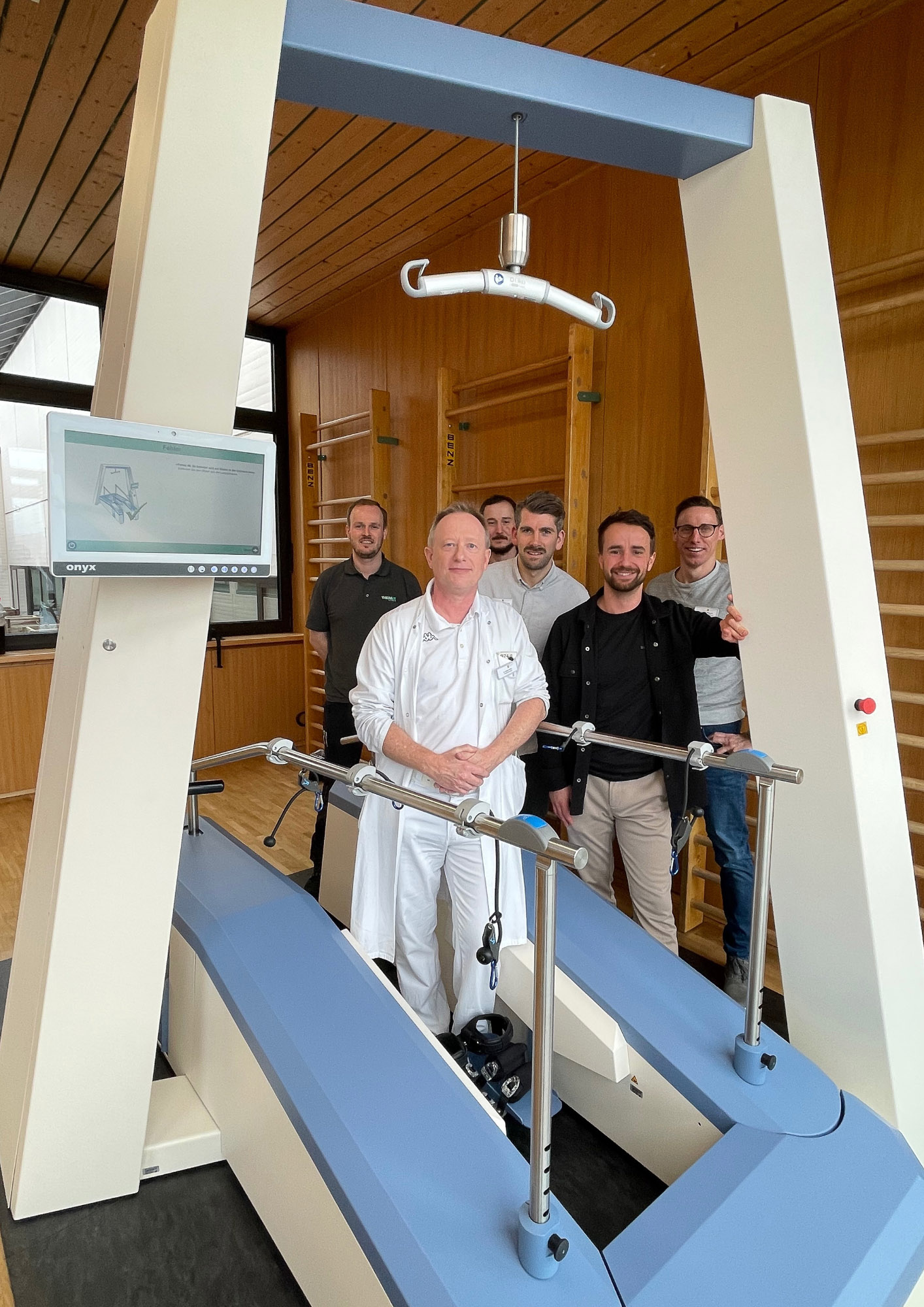
THERAPY Magazin
Learning to walk again with robotic support

Lars Timm
International Sales Account Manager, THERA-Trainer
Bad Wurzach rehabilitation clinic gets new gait trainer
The Waldburg-Zeil clinic in Bad Wurzach now boasts the “gold standard” in gait rehabilitation. This is how the Head of Neurology, Dr Martin Schorl (57), describes their new comprehensive treatment offering, featuring the newly acquired THERA-Trainer lyra gait trainer. This robot-assisted therapy device helps severely affected patients who have suffered a stroke or other damage to the nervous system to learn to walk again.
Professor Stefan Hesse, one of the pioneers of gait rehabilitation, coined the phrase: “If you want to learn to walk again, you have to walk!” With the new device, this specialised exercise can now be done with significantly greater intensity and frequency, Schorl explains, adding: “Wheelchair use can be avoided for one in seven patients thanks to this therapy. This has been scientifically proven.”
Together with botulinum toxin therapy (see info box), the rehabilitation clinic now has a unique selling point that extends beyond the region. “For severely affected patients with spastic hemiplegia in the subacute phase of rehabilitation after a stroke, we can guarantee the best possible treatment with this combination,” emphasises Schorl. Around 800 to 1,000 steps per day are required for the brain to “reprogramme” the sequence of movements when walking, explains the specialist.
The new therapy device provides significant relief on internal processes, confirms physiotherapist Johannes Schuschkewitz. “Previously, two or three therapists were needed for particularly severely affected patients to manage just a few steps. With the ‘lyra’, it will be possible to complete 2000 to 3000 steps in the same time. This is a real game changer when it comes to relearning to walk,” says the 36-year-old. He adds: “A wheelchair can come straight in through the ground-level entrance. The individually adjustable weight relief helps when walking. The movements are guided by foot pedals to train the natural gait pattern.”
Professor Stefan Hesse, one of the pioneers of gait rehabilitation, coined the phrase: “If you want to learn to walk again, you have to walk!” With the new device, this specialised exercise can now be done with significantly greater intensity and frequency, Schorl explains, adding: “Wheelchair use can be avoided for one in seven patients thanks to this therapy. This has been scientifically proven.”
Together with botulinum toxin therapy (see info box), the rehabilitation clinic now has a unique selling point that extends beyond the region. “For severely affected patients with spastic hemiplegia in the subacute phase of rehabilitation after a stroke, we can guarantee the best possible treatment with this combination,” emphasises Schorl. Around 800 to 1,000 steps per day are required for the brain to “reprogramme” the sequence of movements when walking, explains the specialist.
The new therapy device provides significant relief on internal processes, confirms physiotherapist Johannes Schuschkewitz. “Previously, two or three therapists were needed for particularly severely affected patients to manage just a few steps. With the ‘lyra’, it will be possible to complete 2000 to 3000 steps in the same time. This is a real game changer when it comes to relearning to walk,” says the 36-year-old. He adds: “A wheelchair can come straight in through the ground-level entrance. The individually adjustable weight relief helps when walking. The movements are guided by foot pedals to train the natural gait pattern.”
For severely affected patients with spastic hemiplegia in the subacute phase of rehabilitation after a stroke, we can guarantee the best possible treatment with this combination.
Ambulante Rehabilitation
Fachkreise
Gait
lyra
Stationäre Rehabilitation
Therapy & Practice
THERAPY 2024-II
THERAPY Magazine

Lars Timm
International Sales Account Manager, THERA-Trainer
Lars Timm studied Sports
Science with a focus on
rehabilitation in Freiburg i.Br.
and M.Sc. Sports Engineering
at KIT Karlsruhe.
References:
- www.wz-kliniken.de
You need to load content from reCAPTCHA to submit the form. Please note that doing so will share data with third-party providers.
More InformationYou are currently viewing a placeholder content from Turnstile. To access the actual content, click the button below. Please note that doing so will share data with third-party providers.
More Information